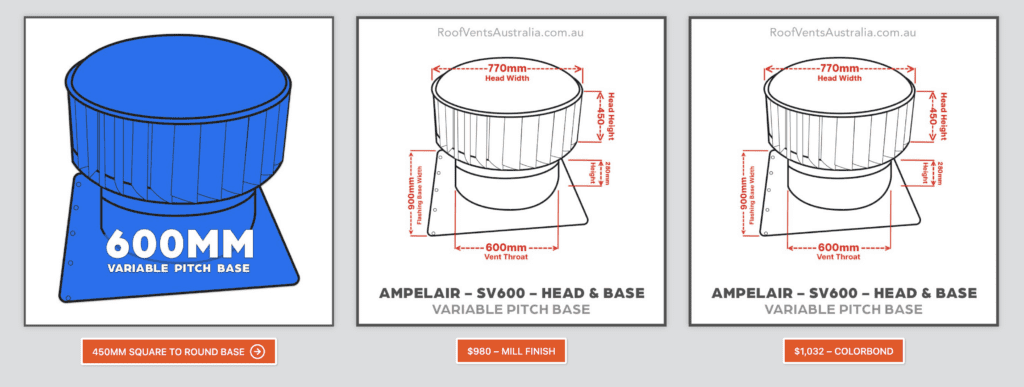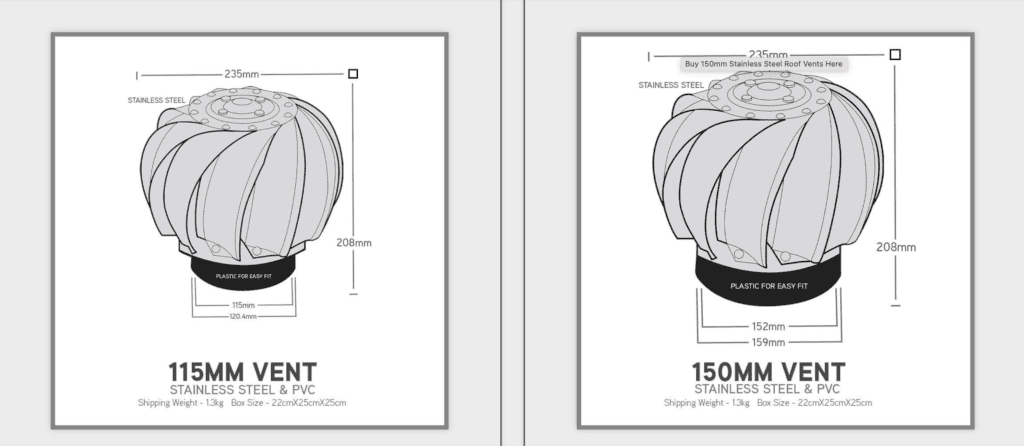Maximizing Roof Efficiency: An In-Depth Guide to Ventilation, Insulation, and Material Choices in Australia


Rain Heads Custom Made Shipped Free Australia Wide – Click Here >
Dambuster Rain Heads Shipped Free Australia Wide – Click Here >
Commercial Industrial Roof Vents 300mm-950mm – Click Here >
Eco-Friendly Roofing Insulation Shipped Free – Click Here >
Gutter Sumps Shipped Free Australia Wide – Click Here >
Australia’s varying climate—from the hot and dry inland areas to the humid coastal regions—poses a unique set of challenges for the built environment. One of the most overlooked but critical components of any building is the roofing system. In this article, we’ll delve deep into the various aspects of roof construction, from adhering to Australian Building Codes and Industrial Roof Ventilation Standards to the significance of selecting the right materials and roof vents.
Roof Vents and Australian Building Codes
Roof ventilation is critical to the longevity and efficiency of any roofing system. The National Construction Code (NCC) in Australia has specific requirements for residential and commercial buildings in terms of roof ventilation. These codes are designed to ensure that a building’s thermal performance, fire safety, and structural integrity are maintained [NCC, 2019].
One important NCC requirement is the inclusion of roof vents to dissipate heat and moisture build-up in the roof cavity. The South Australian Government’s Building and Energy Efficiency Solution (BEES) for roof and ceiling construction provides comprehensive guidelines, specifying that roof vents should be evenly distributed across the roof and should meet the minimum area requirements as stated in AS/NZS 1668.2 (Ventilation design for indoor air contaminant control).
Industrial Roof Ventilation Standards
In an industrial setting, the requirements for roof ventilation are even more stringent due to occupational health and safety concerns. The relevant Australian standards, such as AS/NZS 1668.1 (The use of ventilation and air-conditioning in buildings) and AS 4740 (Natural ventilation of buildings), should be followed meticulously.
For instance, in Queensland, the Work Health and Safety Regulation 2011 mandates specific air quality and temperature controls for indoor work environments, including proper roof ventilation systems. Likewise, Commercial Roof Ventilation in Melbourne needs to be compliant with both state and federal regulations, particularly when dealing with commercial spaces like shopping centers, hospitals, and offices. These spaces often require customized solutions to address air quality and temperature control effectively.
Metal Roof Replacement DIY Kit
For those considering replacing their roofs, metal roofs are an excellent option. They are durable, energy-efficient, and have a long lifespan. Various DIY kits are available for those willing to undertake the project themselves. However, a DIY approach should not be adopted without due consideration of Australian standards, particularly AS 1562 (Design and installation of sheet roof and wall cladding), AS 2179 (Specifications for rainwater goods, accessories, and fasteners) and AS/NZS 1170 (Structural Design Actions).
Roof Insulation R-Value Australia
Another essential consideration when it comes to roofing is insulation. The R-Value is a measure of thermal resistance and in Australia, the required R-values for roof insulation vary between states and territories. For instance, in Victoria, a minimum total R-Value of 4.1 is required for ceilings, while in Queensland, a minimum R-Value of 4.0 is necessary [Your Home, Australian Government].
Insulation with a higher R-value is particularly beneficial in the colder regions such as Tasmania, where it can help in reducing heating costs. Roof insulation should conform to AS/NZS 4859.1, which specifies the requirements for materials used in the thermal insulation of buildings.
Sustainable Fibreglass Roof Sheeting
While metal roofing is popular, fibreglass roof sheeting is also gaining traction due to its sustainable properties. Fibreglass roofing is light, durable, and offers good insulation properties. It is also more resistant to corrosive environments, making it an excellent choice for industrial applications. Manufacturers like Stratco offer fibreglass sheeting that complies with Australian building codes and standards, including AS/NZS 4256 (Plastic roof and wall cladding materials).
Passive Roof Ventilation Solutions
Passive ventilation uses natural airflow to regulate the temperature and moisture levels in a building. Whirlybirds, ridge vents, and soffit vents are all examples of passive roof ventilation systems. These are highly recommended in coastal areas like New South Wales and Western Australia where salt-laden air can cause corrosion in motorized ventilation systems.
Best Roof Vents for Coastal Areas
Coastal areas pose a unique set of challenges due to the harsh, salty environment. For these areas, marine-grade materials like stainless steel or aluminium should be used for roof vents. The Australian Building Codes Board (ABCB) has published a guideline for building in coastal areas, stating that material selection should be appropriate to withstand corrosion.
Commercial Roof Ventilation Melbourne
The commercial sector in Melbourne often requires specialized ventilation solutions due to the varied needs of different types of buildings. Companies such as Vent-A-Roof offer custom solutions that are compliant with the Victorian Building Authority’s guidelines. Always ensure that your contractor is familiar with the state-specific requirements for roof ventilation.
Stretch Roof Vent for Low Slope Roofs
Low slope roofs are particularly tricky when it comes to effective ventilation. A stretch roof vent system can be an ideal solution as it adjusts to the roof’s pitch, ensuring adequate airflow. These systems are compliant with AS 1562.1-2018, which deals with design and installation of metal roof cladding.
Conclusion
Ensuring your roof meets the complex matrix of building codes, material choices, and insulation and ventilation standards is critical for the long-term performance and efficiency of any building in Australia. Failure to comply not only puts you at risk of contravening regulations but can also result in increased energy costs and reduced lifespan of your roofing system. Whether you are in the industrial sector in Queensland, operating a commercial venture in Melbourne, or living in a coastal region of Western Australia, adhering to the established guidelines and standards is non-negotiable. Making informed choices can save money, reduce environmental impact, and significantly improve the quality of your indoor environment.
References
- National Construction Code (NCC), 2019.
- AS/NZS 1668.2
- South Australian Government’s Building and Energy Efficiency Solution (BEES).
- Work Health and Safety Regulation 2011, Queensland.
- AS/NZS 1668.1
- AS 4740
- AS 1562
- AS 2179
- AS/NZS 1170
- Your Home, Australian Government.
- AS/NZS 4859.1
- AS/NZS 4256
- Victorian Building Authority
- Australian Building Codes Board (ABCB)
- AS 1562.1-2018
Note: All standards and codes are subject to periodic updates. Always check the latest edition for current information.
